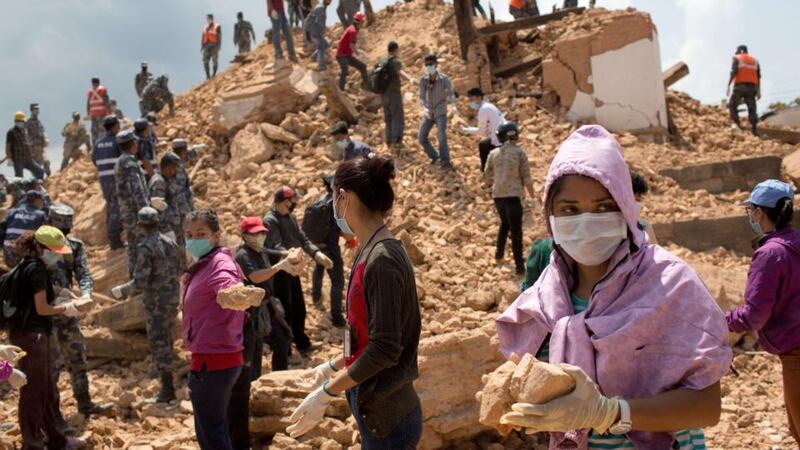Some of the relief material for survivors of Nepal's devastating earthquake was being held up at the country's only international airport because of customs bottlenecks, the United Nations said on Saturday, as the death toll from the disaster passed 6,600.
Nepal exempted tarpaulins and tents from import taxes on Friday, but UN Resident Representative Jamie McGoldrick told Reuters the government had to loosen customs restrictions further to deal with the increasing flow of relief material.
“They should not be using peacetime customs methodology,” he said. Material was piling up at the Kathmandu airport instead of being ferried out to victims, McGoldrick said.

There was no immediate response from the government but Finance Minister Ram Sharan Mahat had appealed to international donors on Friday to send tents, tarpaulins and basic food supplies, saying some of the items received were of no use.
Need for grain, not mayonnaise
“We have received things like tuna fish and mayonnaise. What good are those things for us? We need grains, salt and sugar,” he told reporters.
US military aircraft and personnel were to arrive in Kathmandu on Saturday to help in relief operations. One of their tasks would be to deal with the growing piles of aid material.
Brigadier General Paul Kennedy of the US Marine Corps told Reuters six military aircraft, including two helicopters, were to arrive, accompanied by 100 Marines and lifting equipment, under an agreement reached with Nepal's government earlier in the week.
“What you don’t want to do is build up a mountain of supplies”, blocking space for planes or more supplies, Kennedy said.
There were other bottlenecks besides customs.
Nepali government officials have said efforts to step up the pace of delivery of relief material to remote areas were frustrated by a shortage of supply trucks and drivers, many of whom had returned to their villages to help their families.
"Our granaries are full and we have ample food stock, but we are not able to transport supplies at a faster pace," said Shrimani Raj Khanal, a manager at the Nepal Food Corp.
Army helicopters have air-dropped instant noodles and biscuits to remote communities but people need rice and other ingredients to cook a proper meal, he said.
The government said the death toll from last Saturday’s 7.8 magnitude earthquake had reached 6,621, and that more than 14,000 people were injured.
Sniffer Dogs
In Kathmandu, teams with sniffer dogs were moving slowly through ruined buildings to locate bodies still buried in the rubble a week after the disaster. Elsewhere, volunteers were stacking up bricks recovered from the debris to begin the slow process of reconstruction.
Many Nepalis have been sleeping in the open since the quake, with survivors afraid to return to their homes because of powerful aftershocks. Tents had been pitched in Kathmandu’s main sports stadium and on its only golf course.
According to the United Nations, 600,000 houses have been destroyed or damaged.
The United Nations said 8 million of Nepal’s 28 million people were affected, with at least 2 million needing tents, water, food and medicines over the next three months.
The worry now is how to prevent the outbreak of disease.
"Hospitals are overflowing, water is scarce, bodies are still buried under the rubble and people are still sleeping in the open," Rownak Khan, UNICEF's deputy representative in Nepal, said in a statement.
“This is a perfect breeding ground for diseases.”







